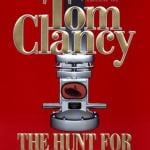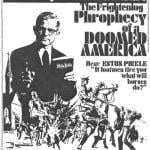Another batch of quickies before I get back to work.
1. William Shatner has apparently confirmed to Sci Fi Wire that Star Trek XI will be “based on young Kirk” and that he will have a part in it once the producers “figure out how to put the dead captain in with the young captain”. Oh, and Shatner just happens to be in the middle of co-writing two books on Kirk and Spock’s Academy days with Star Trek experts Judith and Garfield Reeves- Stevens. Ah, corporate synergy. (Hat tip to Queen Spoo.)
2. That plagiarism court case over The Da Vinci Code just won’t die. Variety, Reuters and the Associated Press report that Michael Baigent and Richard Leigh have taken their case to the Court of Appeal. Does anyone care any more? What I want to know is who will sue over the upcoming prequel, Angels & Demons.
3. Now that the Oscars allow countries to nominate films for the Best Foreign Language Film award that are not produced in languages native to those countries, Canada has submitted Deepa Mehta’s Water (2005) — all of which takes place in 1930s India, with dialogue in Hindi — as its nominee this year. And now, reports Variety, the film will finally be released in India itself:
Deepa Mehta’s “Water” will be released in the land of the helmer’s birth several years after Hindu fundamentalists shut down production of the pic and threatened her.
Director Ravi Chopra’s BR Films will distribute the film in India next month. Pic will be released in Mumbai, Delhi, Calcutta and then other metro areas such as Bangalore and Chennai.
“Water,” the third pic in Mehta’s Element trilogy, revolves around the treatment of widows in colonial India. Hindu fundamentalists broke up production in the holy city of Benares and forced Mehta to complete lensing in Sri Lanka under a different name and with a new cast. Even after the pic bowed to critical acclaim and kudos in 2005, Indian distributors were afraid to take on the pic due to threats from extremists.
“Some days I am really thrilled and other days I’m scared about what they will do to the movie halls,” Mehta said, referring to the fact that rioters vandalized theaters when “Fire,” the second in her trilogy, unspooled in the late 1990s. That pic was about lesbians, also a taboo topic in India. “Earth” was the first film in the trilogy.
Slight fact-check: as you can see from Mehta’s filmography here, Fire (1996) actually came out two years before Earth (1998).
4. Oh, the format wars. First Blu-Ray and HD-DVD, and then Total High Def. And now, reports Variety, a British company is developing something called HD VMD, which it promises will be cheaper and more convenient than any of the formats introduced so far, because it uses existing red-laser DVD technology:
New Medium Enterprises, the company that owns the HD VMD technology, has lined up Bollywood content from Eros Entertainment, an investor, and is pursuing deals in territories around the world, says exec VP Alexandros Potter. The outfit set up shop on Sunset Boulevard late last summer and has been meeting with Icon Prods. and Regency as well as the majors. . . .
Initial HD VMD discs will have similar capacity as the first hi-def discs released by the majors. But players will cost much less: Next month, the company will release software enabling users to play the discs on their computers, likely for free. Actual players cost less than than $300 — a significant savings vs. the $500 to $800 HD DVD players or the $1,000 Blu-ray decks — due to lower manufacturing costs.
The company’s now eyeing March launches in India and China. Potter acknowledges the studios might take some convincing — especially after having invested in the other high-def formats — but believes they will come around to the affordable alternative. . . .
5. The New York Times takes a look at the difficulties that filmmakers have had getting Ayn Rand’s Atlas Shrugged onto the big screen. And it seems current screenwriter Randall Wallace isn’t the only member of this crew with ties to Christianity:
Mr. Ruddy’s exit opened the door to the Baldwins, who optioned the rights to “Atlas Shrugged” from Mr. Aglialoro while running the billionaire Phil Anschutz’s Crusader Entertainment. (Mr. Baldwin, oddly enough, had once been a ticket manager for Mr. Snider’s Flyers.) James V. Hart, who had written “Contact,” developed a draft of the first installment of a three-movie series, but the Baldwins could land neither stars nor financing.
There was also some thought that Mr. Anschutz, whose movies are often designed to accommodate a religiously devout audience, may have lost enthusiasm for the project when he learned that Rand was an outspoken atheist, but an Anschutz spokesman called this a misunderstanding. In any case, when the Baldwins left Crusader in 2004 to set up their own production company, they took the rights to “Atlas Shrugged” with them
Last spring in a twist that might have amused Rand and Mr. Anschutz, the latest deal for an “Atlas Shrugged” film project had its inception during Mass at the Church of the Good Shepherd, in Beverly Hills.
Mr. Baldwin said that a fellow parishioner, Michael Burns — the vice chairman of Lions Gate — approached Mr. Baldwin and his wife “right under the nose of the priest,” whispering to them about the rights to Rand’s novel and asking to “meet right away.”
Mr. Burns — who remembered the conversation taking place outside, after Mass — said he had first read “Atlas” in high school and has given as many as 100 copies as gifts over the years.
“I think it solidified my capitalistic thinking, in that I believe very strongly that people are generally selfish, but that selfishness can ultimately benefit many, many people,” Mr. Burns said.
The Baldwins used Mr. Hart’s script to interest Ms. Jolie in the project, through her manager, Geyer Kosinski. (Mr. Kosinski said Ms. Jolie declined to comment.) Together the Baldwins, Mr. Burns and Mr. Kosinski, who is also to be one of the producers, quickly approached Mr. Wallace about a new adaptation. And in what Mr. Wallace called an uncanny coincidence, he had recently read “Atlas” for the first time, when he and his college-age son had swapped their favorite books.
6. The Hollywood Reporter, via Reuters, has an amusing item on a seminar given by the FBI for screenwriters. My favorite detail:
Michael Kortan, section chief for the office of public affairs, gave attendees a brief lesson in the history of the FBI in film and TV, beginning with the 1935 James Cagney movie “‘G’ Men,” which he said was one of the first gangster movies to tell a story from the FBI’s perspective.
Shortly thereafter, J. Edgar Hoover conceived of something he called “The Dillinger Rule” — the FBI had great stories to tell, so Hollywood ought to tell them, and make sure that the FBI were the good guys. And he wanted to know about anything FBI-related that Hollywood had in the works.
The 1965 Disney film “That Darn Cat!” really had Hoover on edge, Kortan said, because he feared that a film about an allergic agent assigned to follow around a cat would make the FBI look a tad silly, a reputation the bureau didn’t need during the tumultuous 1960s.
Oh, that Walt Disney, he was such a subversive in his later years.











